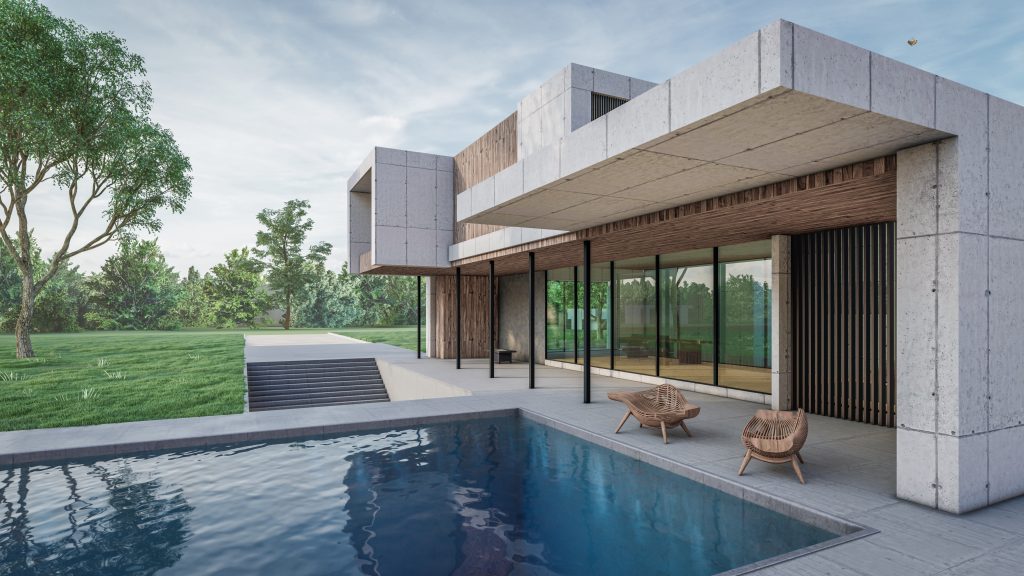How architecture can impact climate change
It’s no secret that buildings can use massive amounts of resources during construction and maintenance. In fact, the building and construction industries combined are responsible for 36% of global energy consumption. The U.S. alone needs four Earths to sustain its current consumption rate. With climate change at the forefront of modern-day issues, sustainable alternatives need to replace traditional approaches to building design.
Sustainable building design is vital for reducing our impact on the climate and the consumption rate of our natural resources. In order to effectively implement sustainable design practices, it’s essential to understand the basic objectives of this approach. Sustainable buildings and built environments aim to reduce the use rates of non-renewable resources, minimize waste, and create a healthy and safe place for people. Architects can design with sustainability in mind by reducing both embodied and operational carbon, working with contractors throughout the building life cycle to minimize waste, and selecting material with low embodied carbon.
During the design process
The Whole Building Design Guide provides six fundamental principles to keep in mind during the design process:
Optimize site potential
Site selection has an immense impact on the environment and human experience of a building. Some of the key sustainability issues around site selection are outdoor air intake, noise issues, loss of natural habitat, water runoff, and heat island effects. The building location and orientation can also impact energy consumption. For example, based on the orientation and shading of a building, natural light can provide an alternative for electricity usage. The average commute can also have an impact on the pollutants released into the atmosphere. A building outside of a city may have plenty of space for parking, although public transportation may be far. However in a city, public transportation may be close, but parking is a challenge. The existing structures and demand for new structures can deeply impact the local ecosystem. If a new structure is built, will the existing structures in that area go to waste? This is why careful site selection is essential during the early stages of construction. A deep understanding of the building site, ecoregion, and the building’s expected energy usage is essential in measuring its environmental impact on the existing ecosystem.
Optimize energy use
In the U.S., the building sector is responsible for over a third of overall annual energy consumption and a great deal of embodied carbon as well. A large amount of energy used in buildings is from non-renewable, fossil fuel resources. In addition, most companies have zero control over their energy grid and the mix of it, so choosing renewables makes a huge difference in minimizing climate impact.
Designers can work to be energy-efficient by implementing passive strategies that utilize sustainable heating, cooling, and lighting systems that maximize the building’s efficiency, while lowering its overall energy consumption.
Protect and conserve water
A great deal of water is used in energy production. Decreasing a building’s energy use goes hand-in-hand with protecting and conserving water use. In addition to the embodied water usage in a building’s energy consumption, there is the actual use and potential waste of potable water. Developers should seek to maximize water efficiency by eliminating any leaks, creating waste treatment and recycling centers, recycling greywater to irrigate lawns, wash sidewalks, and flush waste.
Optimize building space and material use
Materials used in a building have a major influence on its environmental impact. Building development uses massive amounts of natural resources. With the limited raw resources available, recycling construction materials can yield numerous benefits to the environment, while also being the most cost-effective option. In order to reduce overall material use, planners should seek to utilize existing structures, products, and equipment whenever possible.
Enhance indoor environmental quality (IEQ)
Indoor environmental quality is vital to the success of a cost-effective project. During a building’s planning phase, the main focus should be on source control of airborne contaminants and potentially harmful product emissions. Other methods such as neutralizing acoustics and daylighting also play a part in enhancing the IEQ and overall occupant experience.
Optimize operational maintenance practices
Let’s say the building was designed and built perfectly for sustainability. Does that mean the work is done? No. If the built environment isn’t properly maintained with consistent operational practices, then the environmental and human health risks can spike. Using non low-emitting cleaning chemicals can destroy a good IAQ, for example. That’s why it’s crucial to continuously maintain the equipment and material inside a building.
At the end of the day, creating a structure that’s good for the environment is everyone’s responsibility: from the architects and construction teams, to building owners and managers, the occupants, and the maintenance personnel. Everyone needs to be educated on minimizing the climate impact through carefully and consciously designing and maintaining our built environments. When we all work together we can make a difference.


